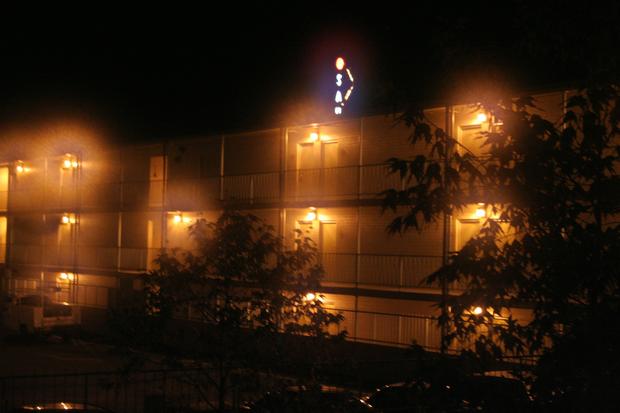The authors say ethanol in the tear-film is one of the causes: it covers the surface of the eye, disturbs the outer layer and favors evaporation of the aqueous content of the tear, deteriorating the optical quality of the image we see. The deterioration in vision is significantly greater in subjects with breath alcohol content over the legal limit for driving, which is another obvious reason to call Uber and not drive yourself.
The study finds that alcohol consumption markedly impairs night-vision because it increases the perception of halos—luminous circles—and other visual night-time disturbances. Moreover, this deterioration of vision is significantly greater in subjects with breath alcohol content in excess of 0.25mg/liter - one glass of wine or beer in the last hour.
Researchers from the Laboratory of Vision Sciences and Applications conclude that alcohol deteriorates the optical quality of the image because ethanol from alcoholic drinks passes into the tear and disturbs the outermost layer of the tear-film—the lipid layer—facilitating the evaporation of the aqueous part of the tear. In an eye with a deteriorated tear-film, the quality of the image that forms in the retina also deteriorates, as the study shows.
In their Journal of Ophthalmology article, the authors evaluate retina-image quality and night-vision performance following alcohol consumption in a sample of 67 subjects. These volunteers had their breath alcohol content measured with an evidential breath-alcohol analyzer, supplied by the traffic division of the Spanish Civil Guard in Granada. The participants consumed different quantities of a prize-winning wine from the Pago de Almaraes wineries, S.L. Benalúa de Guadix, Granada, winner of the International Challenge du Vin de Bordeaux.

Credit: Universidad de Granada
"Halometer" measurements
To assess visual performance in low-illumination conditions, the researchers used a visual test known as a “halometer”, developed in the laboratory. This enabled them to quantify the level of night-vision disturbance in the form of, say, halos around bright lights, perceived by the subjects.
The results showed that following alcohol consumption, the perception of halos and other night-time visual disturbances increases and the optical quality of the image the eye produces deteriorates. This is more marked in subjects with a breath alcohol content level over the legal limit for driving, that is, in excess of 0.25mg/l.
Principal author of the study José Juan Castro explains that “this research offers results of value to society and public healthcare, especially in relation to night-time driving. Alcohol consumption and low-illumination conditions are factors present in many traffic accidents, hence people must to be made aware of the effects of alcohol consumption, especially on vision”.
In fact, under these conditions, the perception of visual halos can make it difficult for drivers to see a pedestrian crossing the road, to distinguish a traffic sign, or they could be dazzled in some way by the headlights of another car coming towards them.
Citation: José J. Castro, Antonio M. Pozo, Manuel Rubiño, Rosario G. Anera and Luis Jiménez del Barco, 'Retinal-Image Quality and Night-Vision Performance after Alcohol Consumption', Journal of Ophthalmology Volume 2014, Article ID 704823, 7 pages DOI: 10.1155/2014/704823





Comments